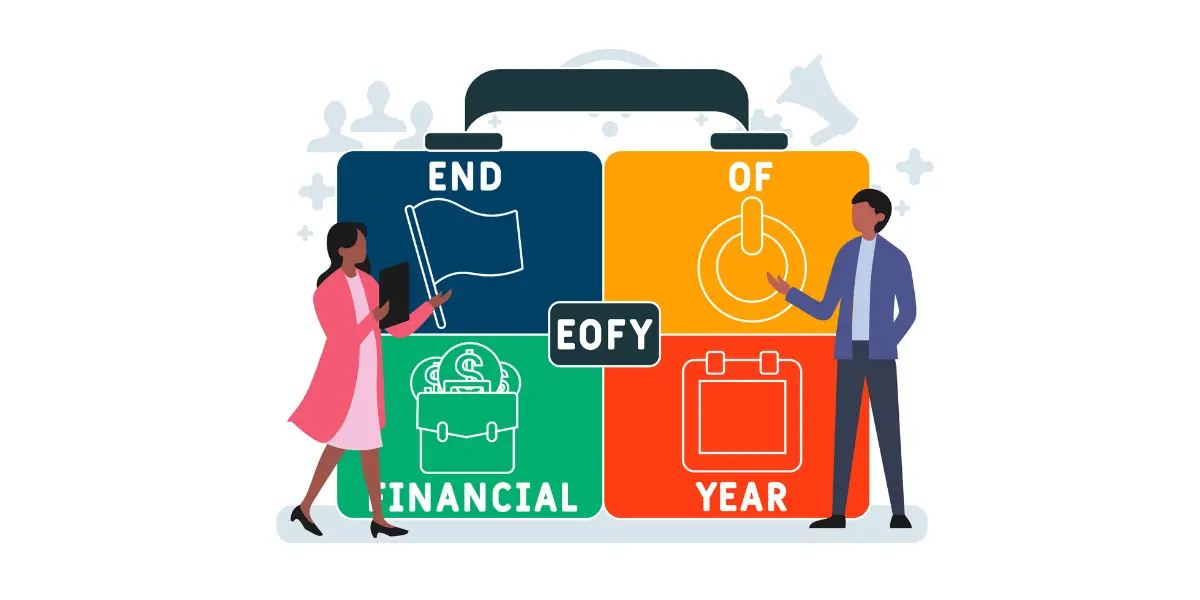Beyond the Deadline: Building Future Capability This EOFY

The end of the financial year (EOFY) is a time often associated with numbers, compliance, and deadlines. But for HR and Learning & Development (L&D) professionals, it also presents a strategic opportunity, one that extends far beyond budget balancing. It is a moment to consider not just how funds are spent, but how that investment can shape the future workforce.
Each year, many organisations find themselves rushing to allocate unspent training funds as the financial year comes to a close. Despite the best of intentions, this recurring scenario highlights some common challenges. When these challenges result in underspending, the consequences go beyond just missed opportunities. Finance departments may interpret the unused budget as a lack of necessity, potentially reducing future allocations. Over time, this can inadvertently signal that L&D is a low priority, when, in reality, it plays a crucial role in talent retention and business performance.
Instead, EOFY should be viewed as a strategic checkpoint, a chance to ask meaningful questions:
- Where are our most significant capability gaps?
- What training will have the greatest impact, now and into the future?
- How can we use remaining funds to build momentum into the new financial year?
By reframing EOFY spending as a proactive investment rather than a compliance task, organisations can take meaningful steps toward capability uplift, employee engagement, and future-readiness.

Future-Proofing Your Workforce Starts Now
We are operating in a time of rapid disruption. Whether it is the rise of AI, shifting employee expectations, hybrid work, or economic uncertainty, the skills needed to thrive are evolving. Traditional technical expertise is no longer enough. According to the World Economic Forum, 39% of workers' core skills are expected to change by 2030.
EOFY presents an opportunity to begin addressing these shifts, before they become urgent. By proactively developing skills that will be essential over the next 12 to 24 months, organisations can avoid future talent shortages and reduce the costs associated with reactive hiring or reskilling later.
Identify What Matters Most
When planning your EOFY training investments, it is easy to feel overwhelmed by the sheer number of skills and tools gaining prominence. That is why prioritisation is key.
Begin by asking:
- What are our organisation’s strategic goals over the next one to two years?
- Which roles are most likely to be impacted by digital change or market shifts?
- Where do we currently lack the skills to deliver on our objectives?
This insight provides a strong foundation for training decisions that support both organisational priorities and employee growth.
High Impact Areas To Invest In
Digital And Data Literacy
Regardless of industry, every organisation is becoming a data-driven one. Equip your teams with the ability to interpret data, create visual stories, and use dashboards to guide decision-making. Even non-technical employees can benefit from foundational knowledge in analytics, AI, and digital workflows. Courses like Excel for Business: Data Management, and Excel for Business: Data Visualisation are excellent starting points.
Leadership Development
Today’s leaders need to be agile, emotionally intelligent, and digitally savvy. Investing in their growth ensures that they can lead diverse, hybrid teams while navigating uncertainty. EOFY is a great time to enrol current and emerging leaders in programs that develop these skills with courses like Leading with Emotional Intelligence, New Leader, and Operational Resilience.
Human-Centric Skills
As automation takes on more repetitive tasks, skills like critical thinking, resilience, collaboration, and creativity become key differentiators. High-impact courses like Effective Communication, Creative and Critical Thinking, and Resilience in Self help build these essential attributes.
Cybersecurity Awareness
With cyber threats on the rise, your people are the first line of defence. Building awareness across the workforce helps create a culture of risk prevention and digital safety. A course like Cybersecurity Essentials provides employees with the knowledge to recognise threats and respond appropriately.
Sustainability And ESG Awareness
With environmental, social, and governance (ESG) factors gaining prominence, businesses must prepare employees to understand and contribute to these goals. Building awareness around ethical decision-making, sustainability strategy, and stakeholder expectations is essential for long-term success. Future-focused courses such as Environmental, Social, and Governance (ESG), Sustainable Leadership for Managers, and Stakeholder Engagement help employees contribute meaningfully to ESG outcomes.
Invest In People, Inspire Performance
Employee engagement is no longer a nice-to-have and is a critical driver of performance, retention, and organisational resilience. According to Gallup, highly engaged teams show 23% greater profitability, higher productivity, and significantly lower absenteeism and turnover. Yet engagement is not just about workplace perks, it is about purpose, growth, and recognition.
EOFY is uniquely positioned to support these drivers, particularly through professional development. Investments in development show that the business is not only interested in short-term results but is also committed to nurturing talent for the long haul. When employees see that their employer is proactively investing in their growth, it sends a clear message: you matter here. This can be particularly powerful for mid-level employees who may be seeking signs of upward mobility. Whether it is a leadership program, a communication workshop, or an online course in data literacy, training can reinvigorate employees and inspire renewed commitment.

Avoiding Common Pitfalls
While EOFY offers a golden opportunity, it also comes with risks if not approached thoughtfully. Avoid:
- Last-minute decisions that do not align with employee or business needs
- Low-impact training chosen just to spend the budget
- Neglecting measurement, which can weaken future budget requests
Instead, approach EOFY as a strategic project: plan, consult, implement, and review.
Long-Term Gains From Short-Term Action
EOFY training initiatives can be a springboard into the new financial year. The skills, motivation, and connection fostered in June can carry through into July and beyond. Plus, strong outcomes from EOFY spending can strengthen the case for increased training budgets in the next cycle.
Ultimately, EOFY is not just about closing books; it is about opening doors. By using remaining budgets to invest in your people, you are not only ticking a financial box, but you are also building engagement, trust, and capability.
Looking Beyond The Deadline
EOFY may have a hard deadline, but its impact can be long-lasting. Whether your priority is strengthening leadership capabilities, building digital skills, or ensuring broad access to ongoing learning, the decisions you make now will shape the development trajectory for your workforce. With a thoughtful approach, it is possible to transform leftover budget into impactful, future-facing investments, building the capability your organisation needs to succeed.
To help you make the most of this critical period, AIM is offering a range of EOFY discounts. Make the most of your remaining annual budget with courses that deliver long-term value.
20% Off AIM Selected Faculties and Vocational Qualifications
For the professionals looking to take the next step in their career. Vocational Qualifications offer the practical skills and knowledge to help you make an impactful contribution to the workplace. Designed to align with real-world scenarios, our Short Courses emphasise practical and interactive learning

